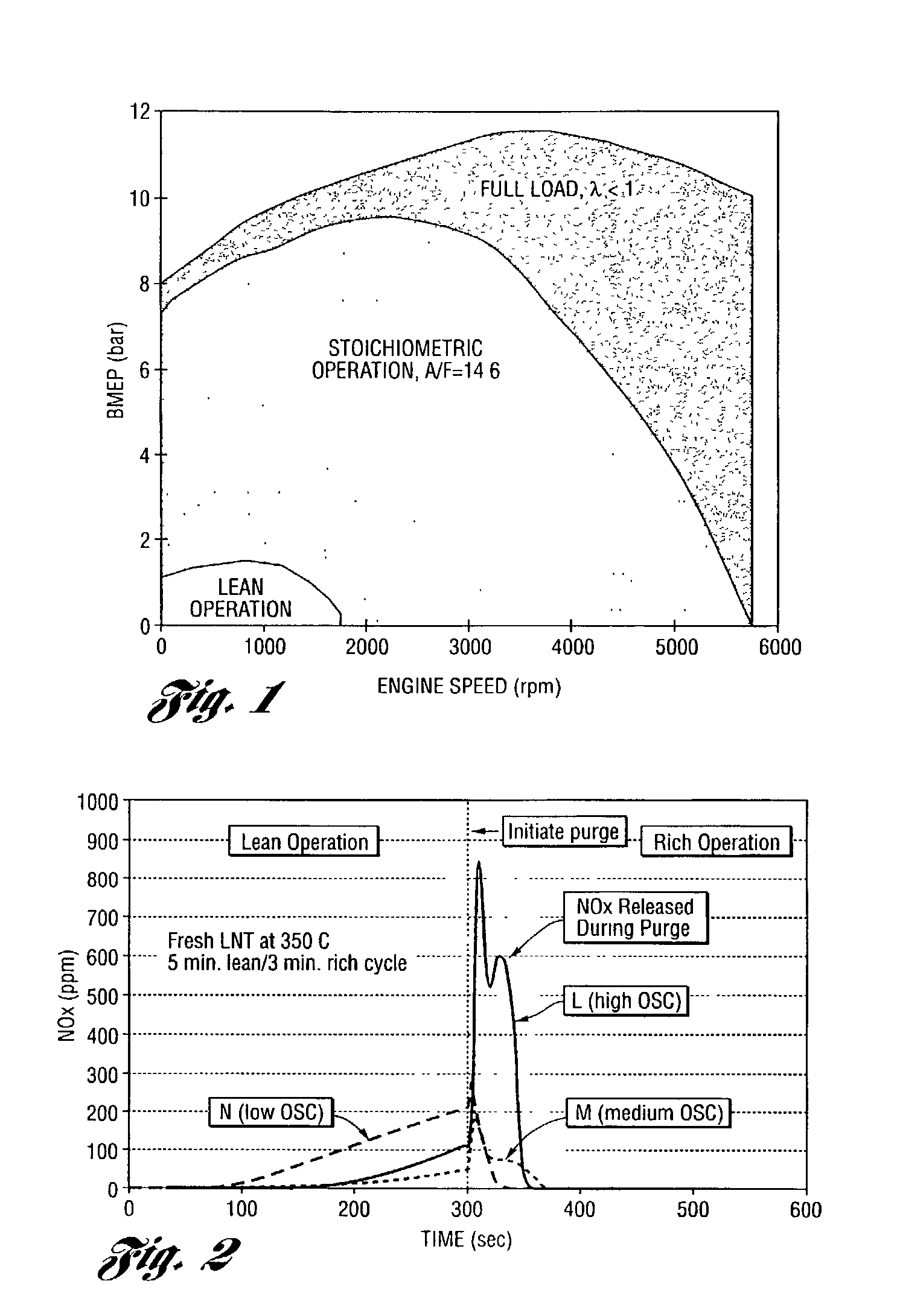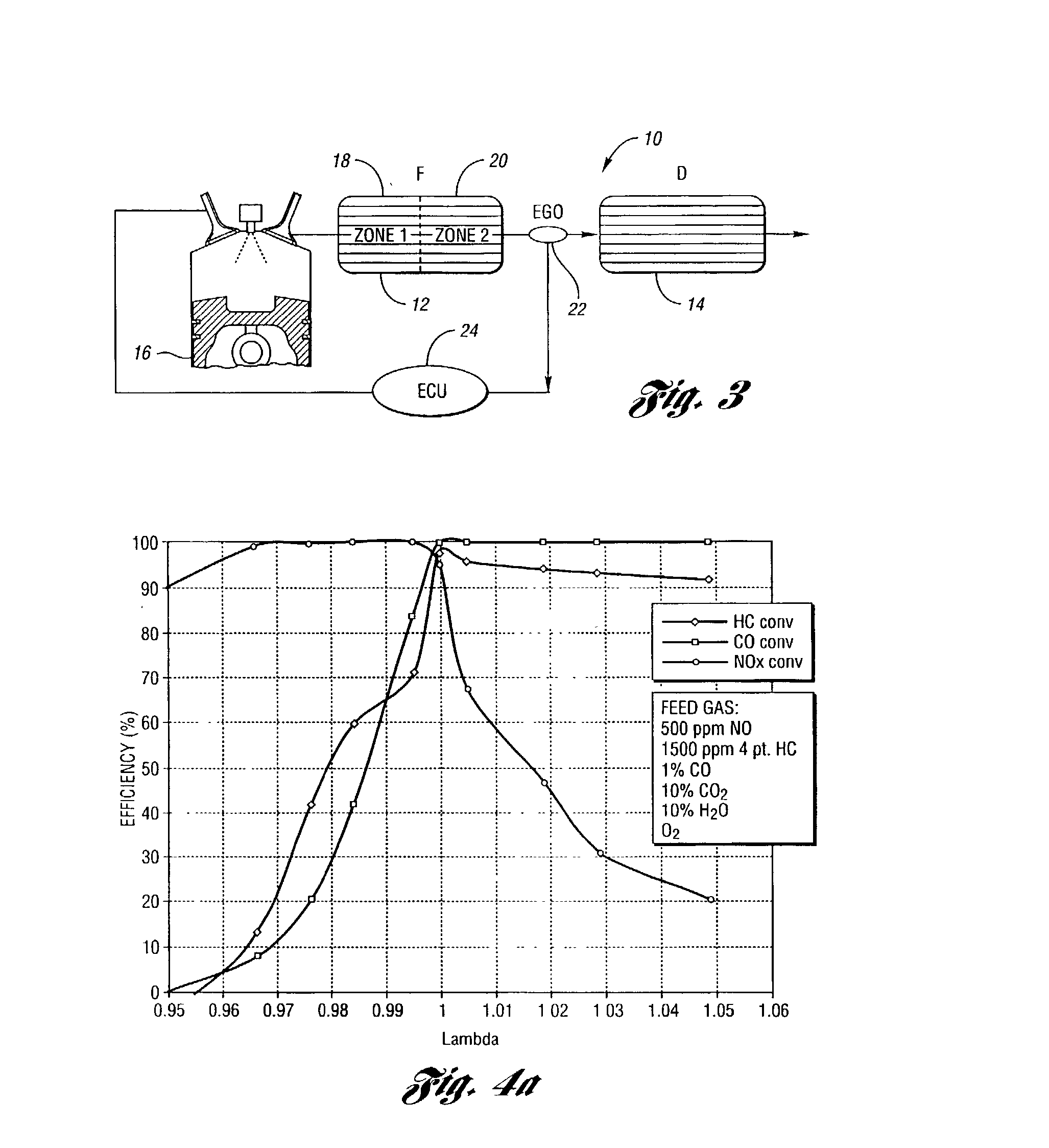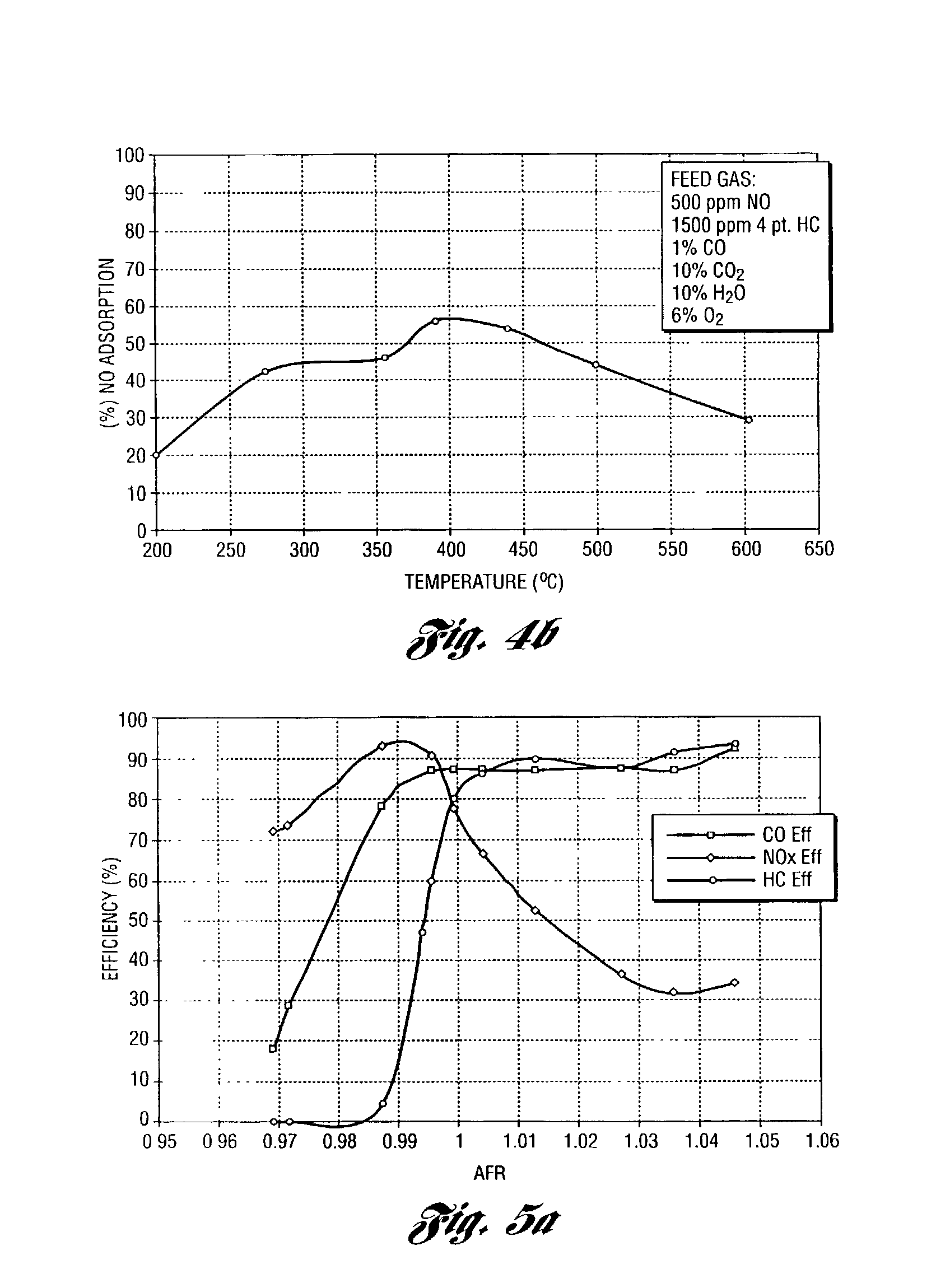Catalyst system for lean burn engines
- Summary
- Abstract
- Description
- Claims
- Application Information
AI Technical Summary
Benefits of technology
Problems solved by technology
Method used
Image
Examples
example 2
[0055] This is a comparative example of a conventional lean NOx trap. Fumed alumina (50.0 g, Degussa), and Ba(NO.sub.3).sub.2 (17.13 g) are dissolved in 500 ml deionized water. This mixture is stirred on a hot plate for 1 hour, and then dried at 80.degree. C. overnight, and then calcined at 600.degree. C. for 6 hours. The calcined powder is ground with 2.5 g Ce / Zr mixed oxide (W.R. Grace) for 48 hr in 100 ml deionized water. Then it is dried at 80.degree. C. overnight, and calcined at 600.degree. C. for 6 hours. This powder is then mixed with H.sub.2PtCl.sub.6.6H.sub.2O in 2.65 g deionized water, ground for 24 hour, then dried at 80.degree. C. and calcined at 600.degree. C. for 6 hr.
example 3
[0056] This example shows the test procedures and conditions. The steady state lean NOx trapping efficiency was measured in a flow reactor as an average efficiency during a 1 minute lean period under different temperatures. The feedgas cycled with 60 seconds lean and 5 seconds rich at a constant space velocity of 30,000 hour.sup.-1. The flow rates were strictly controlled by mass flow controllers. The gas concentrations were measured by a V&F mass spectrometer. The feedgas composition was:
1 Gases Concentration (lean) Concentration (rich) NO 500 ppm 500 ppm HC 1500 ppm 1500 ppm CO 0 4% H.sub.2 0 1.33% O.sub.2 6% 0 CO.sub.2 10% 10% H.sub.2O 10% 10% N.sub.2 balance balance
[0057] The lambda sweep tests were also conducted in a flow reactor at 400.degree. C. with a gas space velocity of 30,000 hour.sup.-1. Here the feedgas composition remains constant except the oxygen concentration varies to achieve the desired lambda value. The feedgas contains 2000 ppm HC, 500 ppm NO, 1% CO, 0.33% H.s...
PUM
| Property | Measurement | Unit |
|---|---|---|
| Fraction | aaaaa | aaaaa |
| Fraction | aaaaa | aaaaa |
| Fraction | aaaaa | aaaaa |
Abstract
Description
Claims
Application Information
 Login to View More
Login to View More - R&D
- Intellectual Property
- Life Sciences
- Materials
- Tech Scout
- Unparalleled Data Quality
- Higher Quality Content
- 60% Fewer Hallucinations
Browse by: Latest US Patents, China's latest patents, Technical Efficacy Thesaurus, Application Domain, Technology Topic, Popular Technical Reports.
© 2025 PatSnap. All rights reserved.Legal|Privacy policy|Modern Slavery Act Transparency Statement|Sitemap|About US| Contact US: help@patsnap.com



